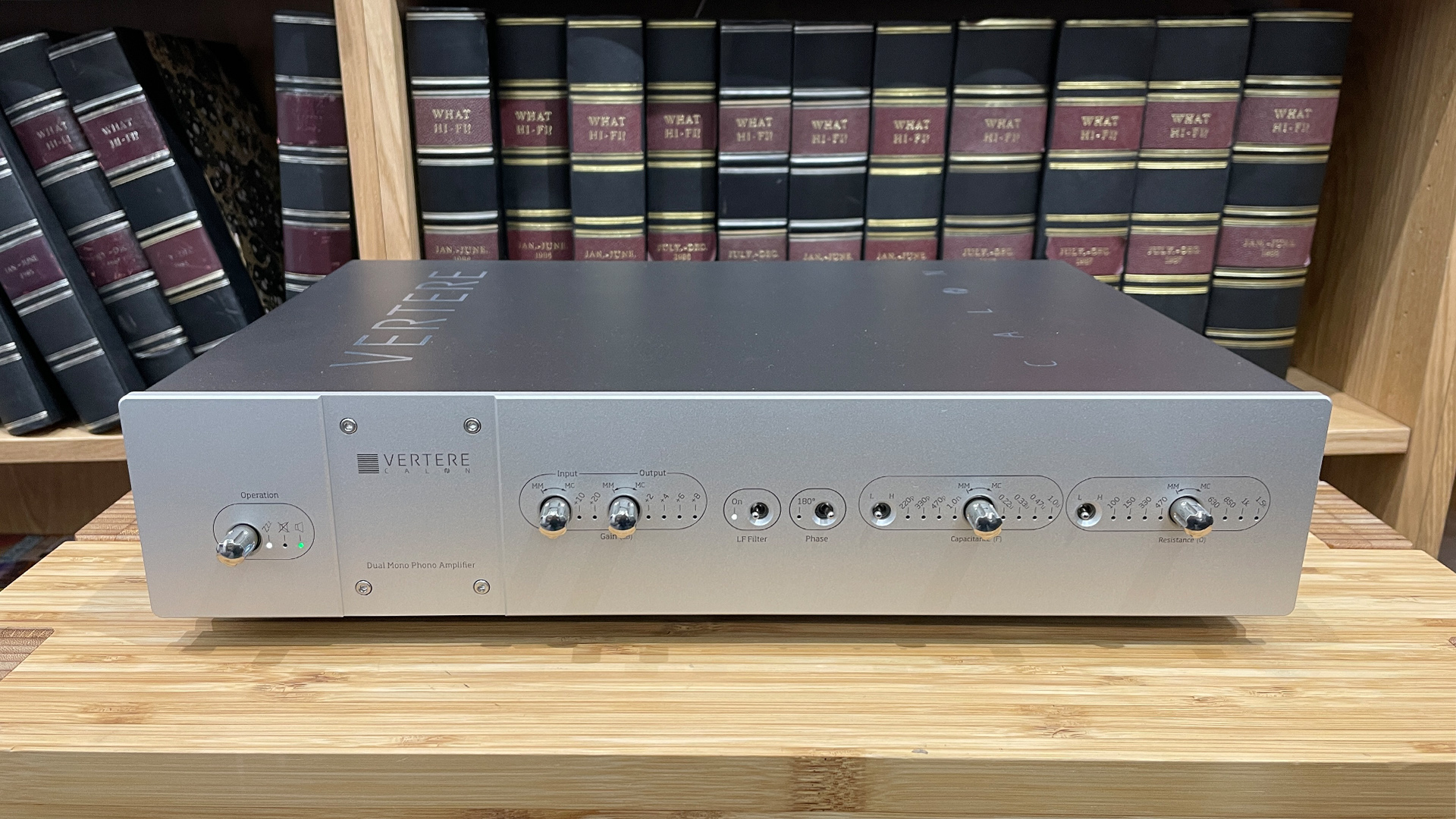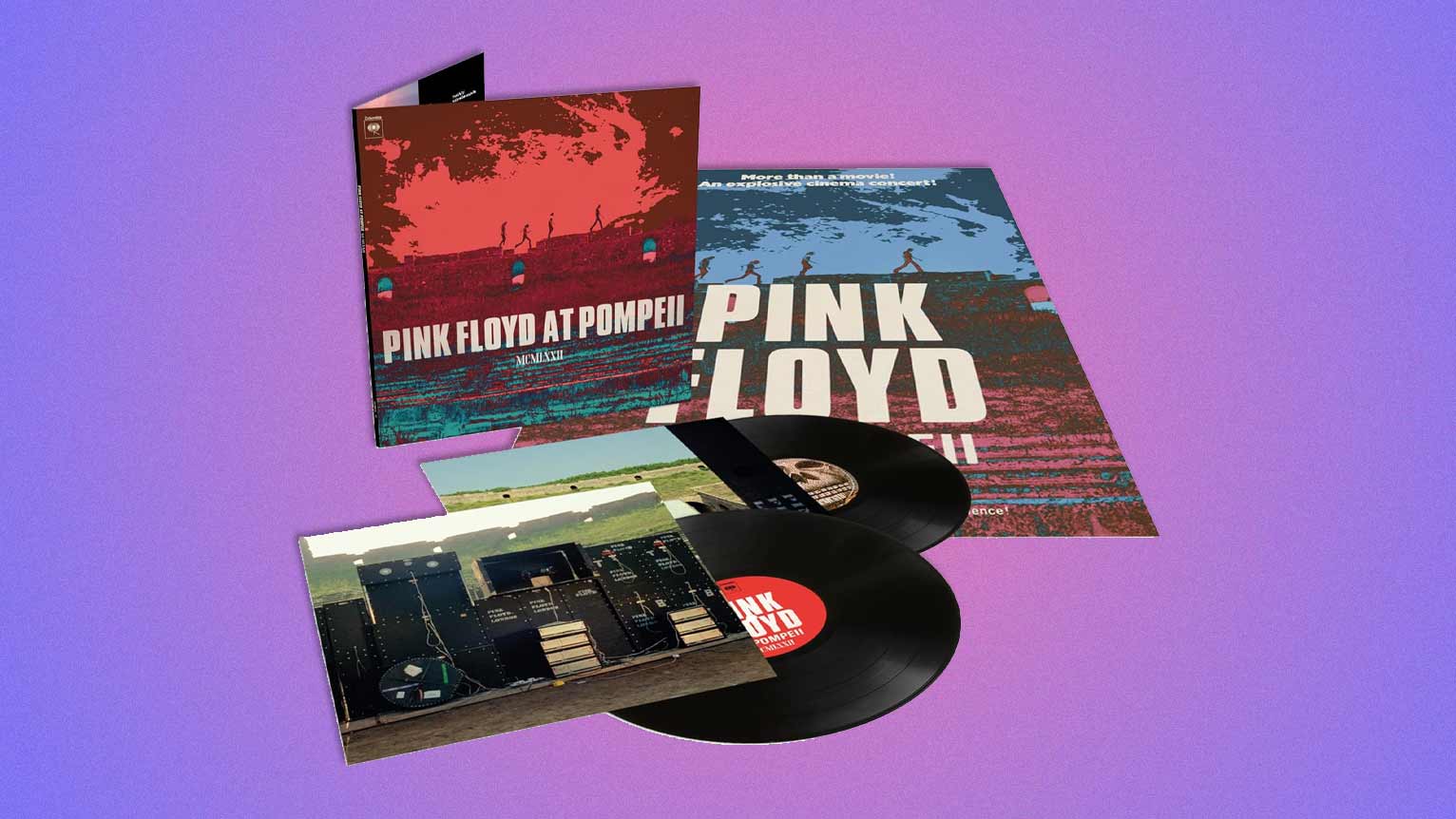What Hi-Fi? Verdict
Vertere’s Calon is one of the finest phono stages we’ve ever heard and has a price tag to match
Pros
- +
Exceptionally expressive presentation
- +
Impressively low noise levels
- +
Musically cohesive as they come
- +
Plenty of cartridge loading options
Cons
- -
That price!
Why you can trust What Hi-Fi?
The name Calon means ‘heart’ in Welsh, which is quite a poetic name for an electronic component that can make or break the performance of a vinyl-playing system. Make no mistake, when it comes to replaying records, no other electronic component in a system sets more of a ceiling on the sound you get than the humble phono stage.
This is obvious once you think about it. Not only is the phono stage responsible for applying the RIAA playback equalisation curve to the cartridge’s signal to balance the tonality, but it also has to amplify that tiny signal by a factor of around 5000 (with a typical moving coil cartridge) before a conventional preamp section can use it.
Any noise or distortion the phono stage’s circuitry generates is also magnified along with the cartridge’s signal, so these unwanted artefacts have to be at an ultra-low level if the performance is going to be good.
The Vertere Calon is a shining example of how things should be done. It is a hugely expensive product, but in a price-appropriate turntable system, it’s hard to better. Any options that come close in ability are priced even more out of reach. Such a towering performance (more of which later) doesn’t come by accident.
Design & engineering
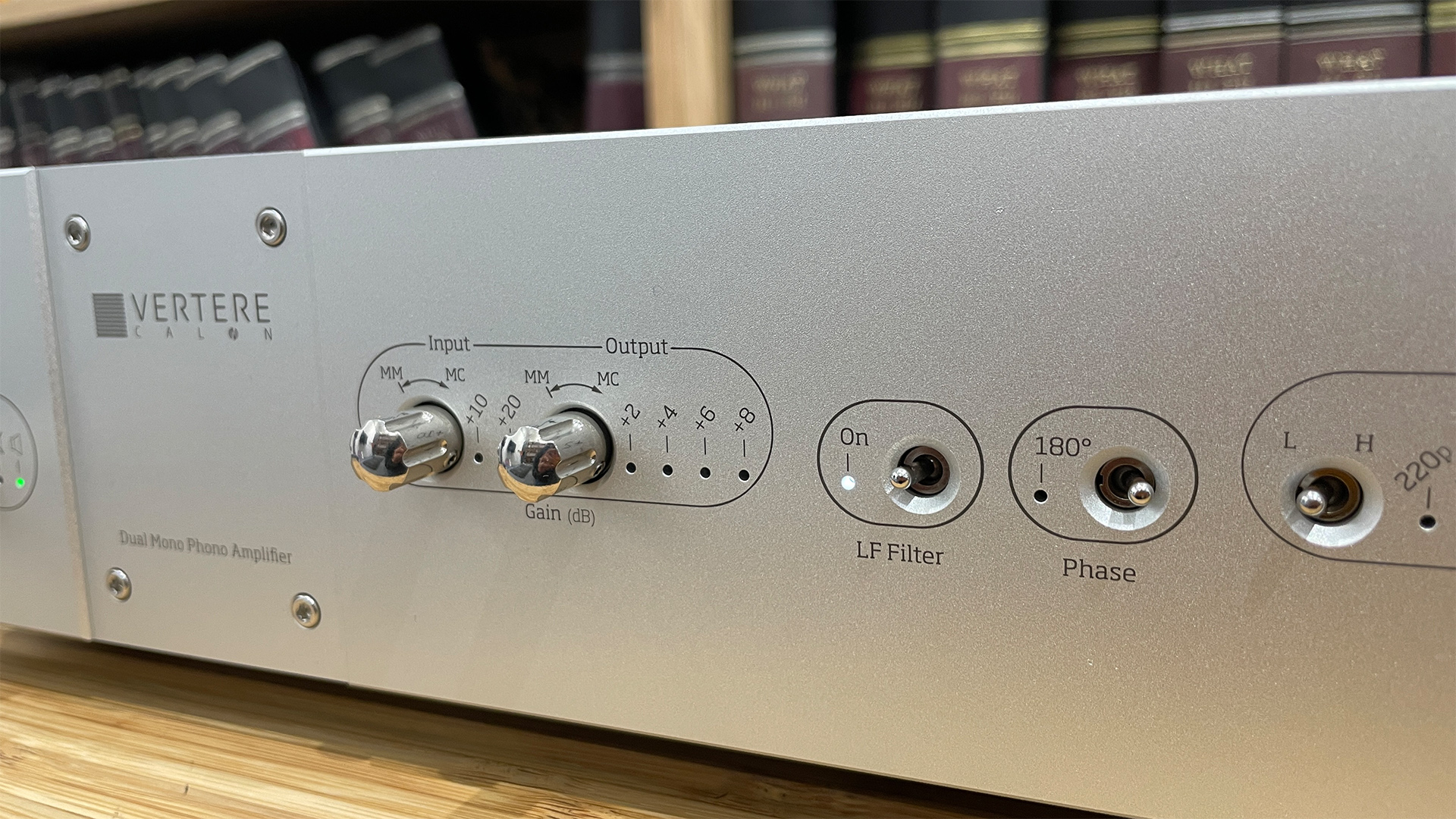
The Calon’s circuit is dual-mono in configuration, with extensive care taken over the power supply arrangement and shielding. This means the signal from each cartridge channel is treated identically and kept isolated from unwanted interaction by its partner.
Doing things this way not only has the potential to improve stereo imaging but also should reduce distortion and interference, so helping performance.
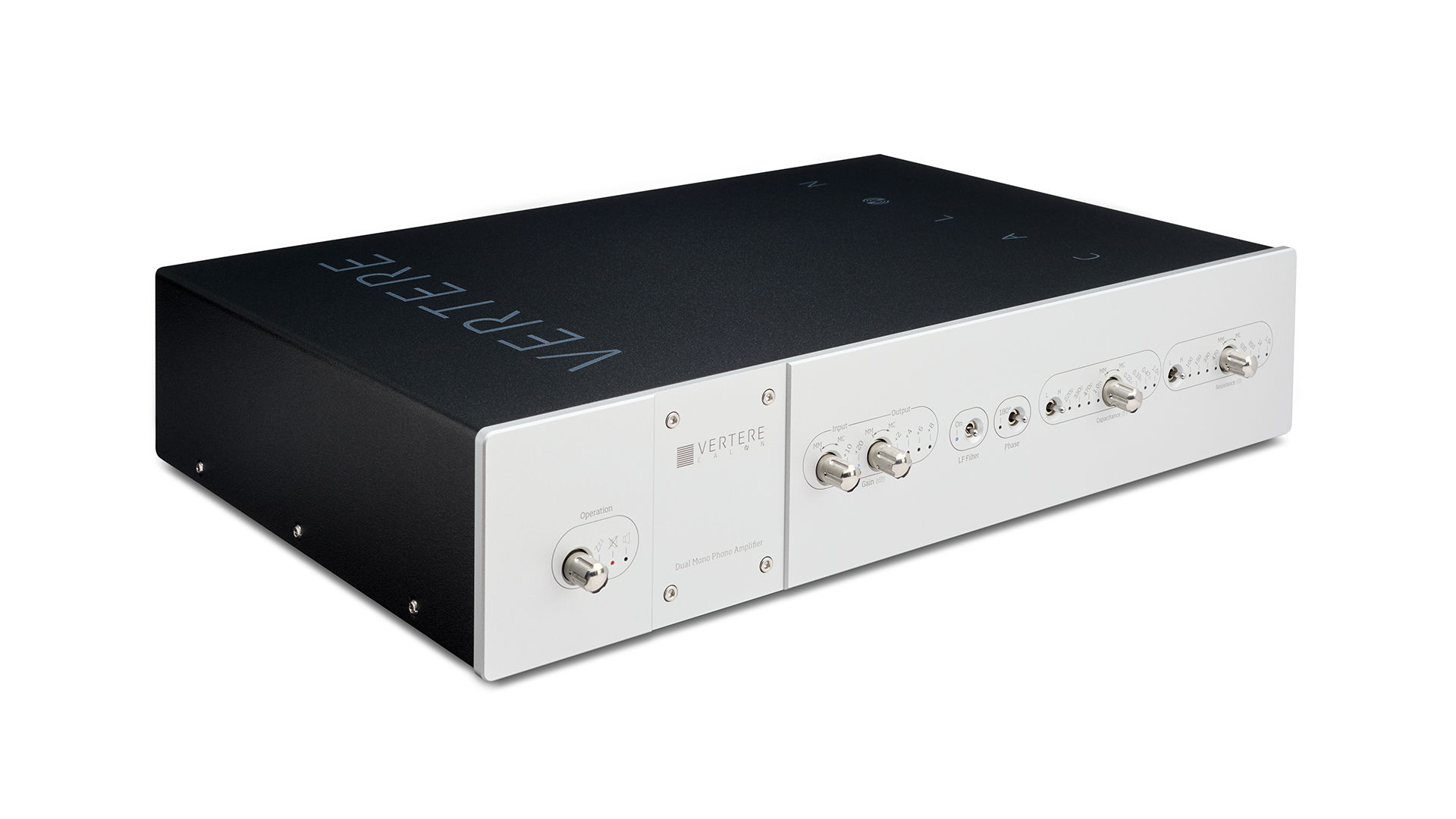
Moving magnet? Yes
Moving coil? Yes
Cartridge loading adjustment? Yes
Remote control? No
Dimensions (hwd) 8.8 x 41.2 x 29mm
Weight 7kg
The amplification boards are sophisticated four-layer gold-plated circuits that are packed full of high-quality components just as you would expect. Unusually though, Vertere hasn’t just crammed them full of fashionable ‘big name’ audiophile parts, rather it has spent a considerable amount of time testing the various alternatives and chosen those that offer the most accurate musical results.
The signal path is unusual too. Ignoring convention, the cartridge’s miniscule output first enters a user-adjustable gain stage that has 0dB, +10dB and +20dB options. The idea is to boost the signal before any equalisation takes place in a bid to preserve the detail and dynamics present.
The RIAA equalisation is then done with a hybrid circuit where the low frequencies are handled actively and the higher ones equalised passively. Vertere has found that this approach gives the most accurate results. The fully equalised signal then passes through another user-adjustable gain stage (0dB, +2dB, +4dB, +6dB and +8dB) before being routed to the single-ended and balanced outputs.
The company is particularly proud of how it has implemented the switchable subsonic filter, claiming it to be pretty much inaudible and having almost no measurable effects above 20Hz. The advantage of such a filter is that it removes subsonic noise, reducing the additional strain on the partnering amplifier and speakers. Once we had confirmed the transparency of the filter (we didn’t hear much in the way of degradation) it was left on for the rest of the test process.
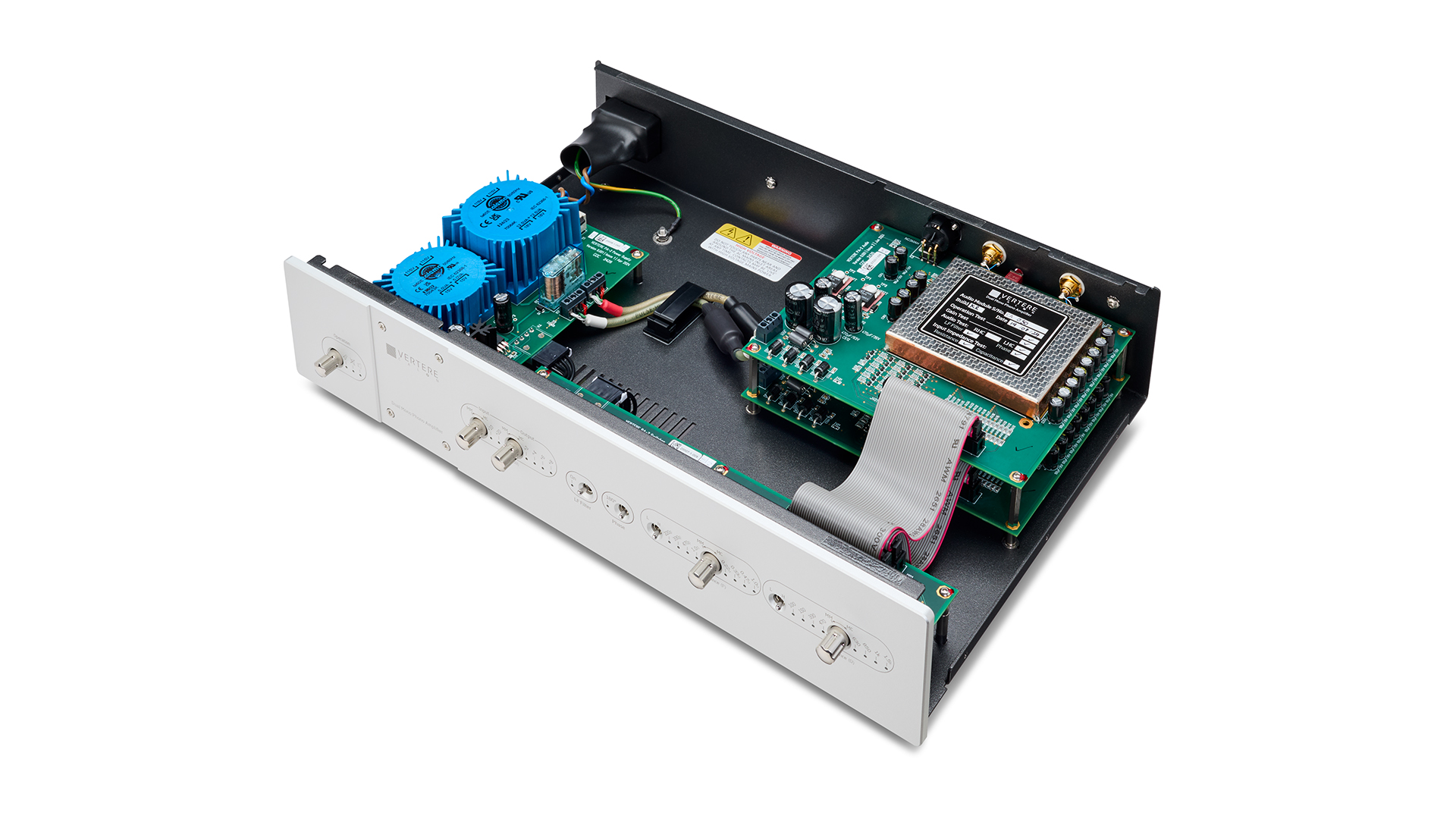
There is also a 180-degree phase switch that can compensate for albums recorded out of absolute phase. Provided your system is transparent enough, it isn’t hard to hear when an album or track isn’t in phase properly, usually due to mistakes being made in the recording or production process.
Cartridge compatibility is good thanks to the Calon’s wide range of adjustability. It has a gain range of 45-73dB with a capacitance from 100pF to 1.0uF and resistance that starts at 100 ohms up to 47kOhms. Those are numbers that should cope with just about any cartridge on the market.
Connections & build
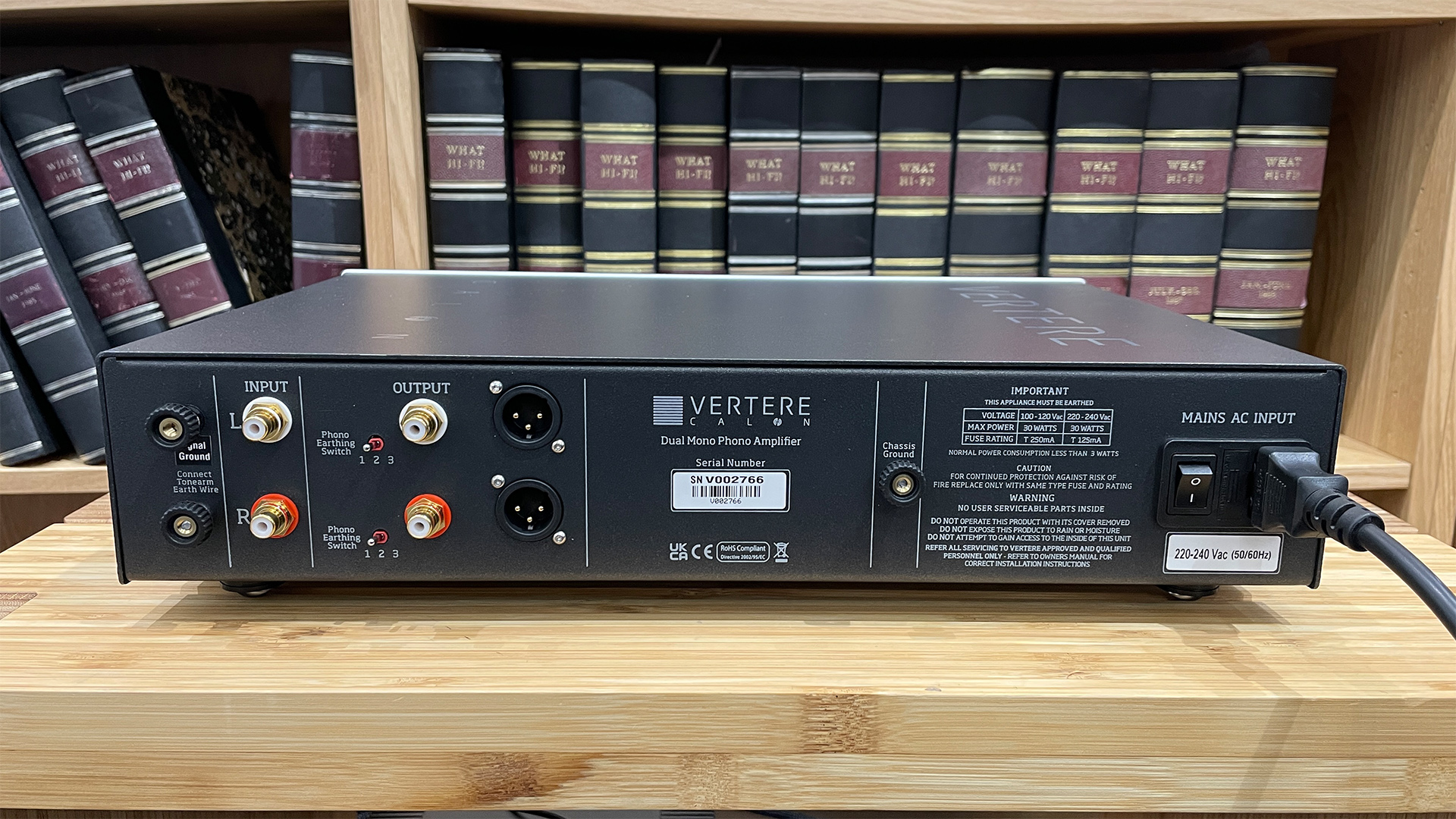
This phono stage’s connectivity covers the fundamentals. There is a single input and both balanced XLR and single-ended RCA outputs. Some rivals have the option to connect more than one deck at a time, which is useful if you have more than one record player in your system, but for most people that probably wouldn’t be a consideration.
Given that hum can be a tough nut to crack in some vinyl-based systems, it is good that Vertere has equipped the Calon with multiple earthing options to help.
Build quality is as good as you would expect at the price, though it is fair to say that the Calon has more of a functional aura than a luxury vibe. It is not hard to find alternatives with more glamorous-looking casework, though we doubt many get close to the internal sophistication of the Vertere.
Even so, the Calon’s casework is beautifully finished and predominantly made of non-magnetic (Austenitic) stainless steel, which provides good shielding from interference without suffering from eddy currents and other magnetic issues the use of steel would normally bring. The front panel is a neatly machined aluminium plate and is available in two colour options: silver or black.
The multiple front panel dials to adjust gain and loading values feel solid and pleasingly positive in use, which simply adds to the quality feel.
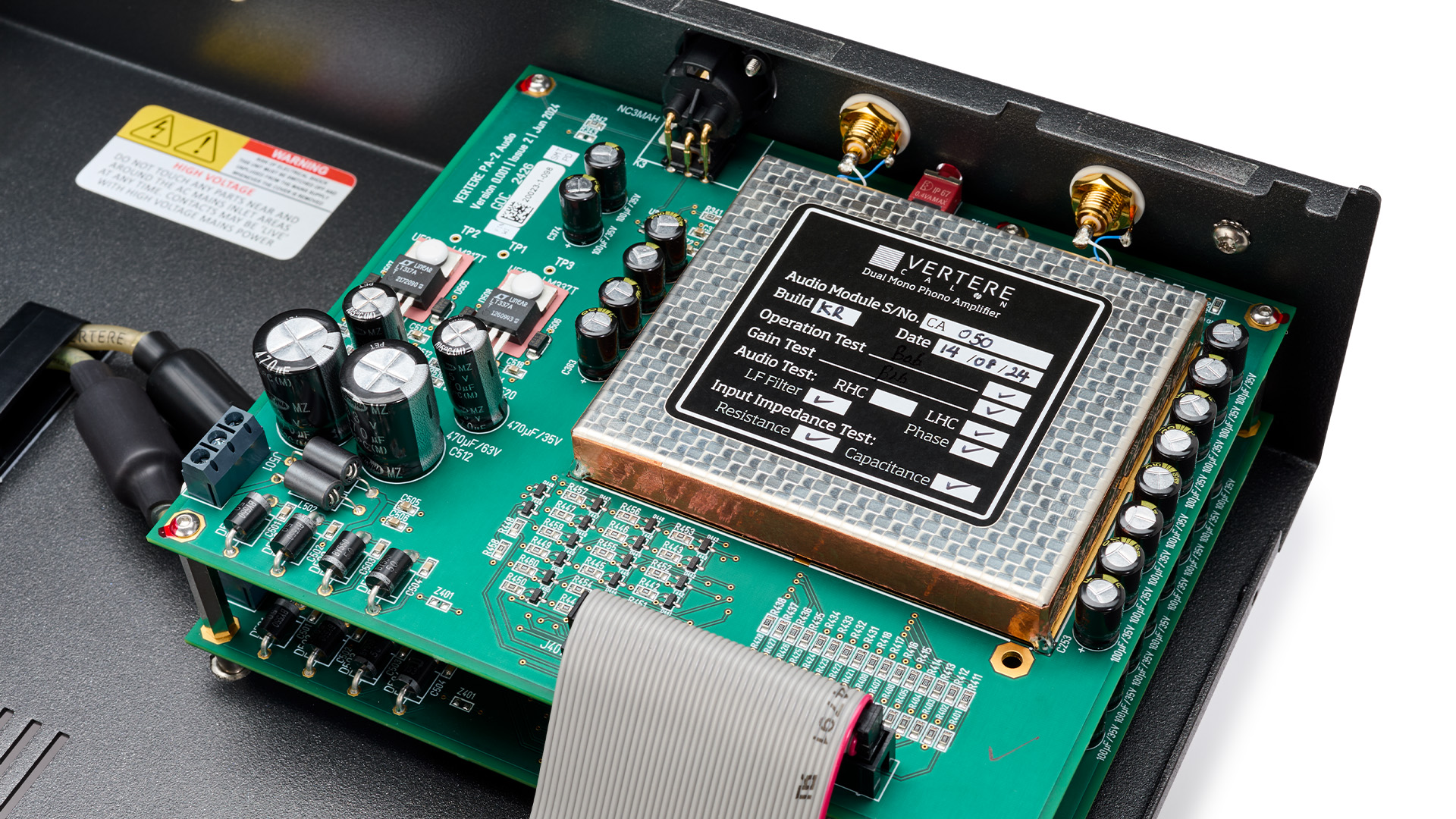
It should go without saying that the Calon deserves to be used with a top-class system fronted by an impeccable record player. Much of our testing is done with the high-end Vertere SG-1 Super Groove MkII turntable with the company’s range-topping XtraX moving coil cartridge, but we also use our reference Technics SL-1000R with both a Kiseki Purpleheart MC and a Nagaoka MP-200 moving magnet.
Just for fun, we also try the Rega Planar 3 RS Edition to see just how good this relatively affordable deck sounds when used with such a revealing phono stage. It copes remarkably well, in case you wondered, though obviously it would never be something we would recommend in real life. The rest of the system is our usual Burmester 088/911MkIII amplifier driving ATC SCM50 speakers.
Sound
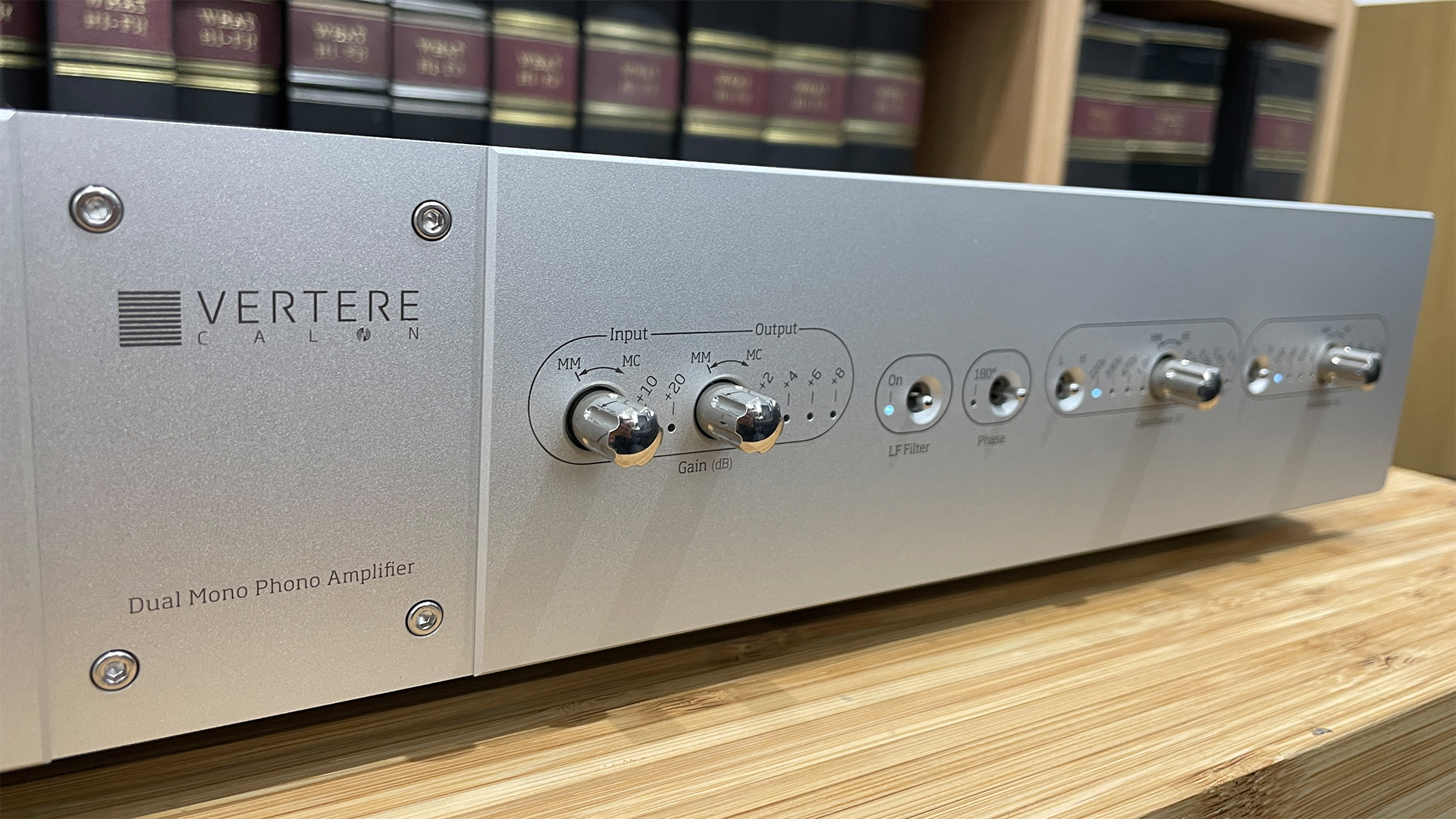
It may seem an odd way to start talking about the Calon’s sound quality, but the aspect of its performance that grabs our attention first is how quiet it is. We aren’t talking about a lack of gain, of course, but the almost total lack of background hiss or noise at anything approaching normal listening levels.
This gives the rest of the sound a wonderfully clean background from which to flow. Such a low noise floor helps with dynamics too, of course, so it’s no surprise to find the Vertere excelling here.
The Calon has the headroom to deliver the large dynamic peaks of Orff’s Carmina Burana with ease, and it is done with a mix of enthusiasm and control that is hugely appealing. Where appropriate, this Vertere sounds big, bold and powerful. It has scale and authority to spare, rendering sounds with a solidity that we’ve rarely heard from any phono stage.
Of course, there is plenty of insight. The Calon sparkles when it comes to detail resolution and the ability to use that information to build a convincing sonic picture. Instruments and voices sound richly textured, full-bodied and spellbindingly natural.
Stereo imaging is as stable as you like. Instruments and voices are firmly locked into position and inhabit an impressively expansive and grounded soundstage. Things retain a crisp focus even when the music becomes demanding, which, if you know this Orff piece, happens quite often.
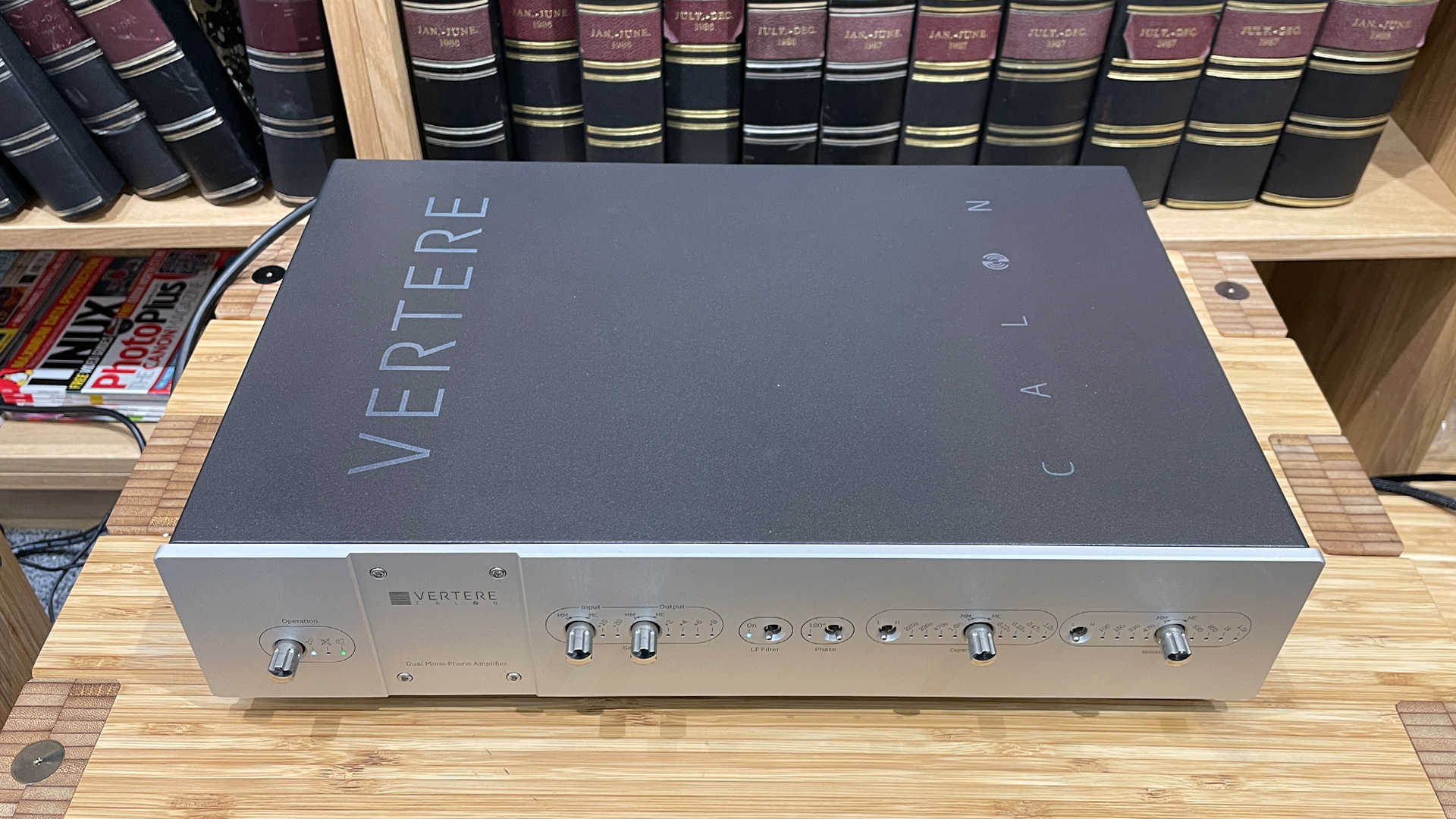
Tonally, the Vertere sounds natural, refusing to add too much of its sonic signature to that of the cartridge’s signal. In an odd way, and despite all the resolution and transparency on offer, the Calon is a pretty forgiving thing. Some rivals love to take recordings apart, highlighting every flaw and limitation, but this phono stage is different.
Give it a recording that can sometimes sound a little thin and unyielding on rival products and it will reveal more substance and richness to the sound than you would expect. Sure, the shortcomings in the recording will still be obvious, but this phono stage tries its best to show you the positives.
Feed it a decent recording, like Nitin Sawhney’s Prophesy set, and it shines. Given appropriate music, it is something of a dance machine with the ability to tie intricate rhythms together and convey the momentum of the music convincingly. Drill down to specifics and there is so much to admire. The lows are immensely powerful and reproduced with a weight and authority that can’t help but impress.
Pleasingly, the bass remains tuneful, taut and articulate, so the music really motors. Voices come through with clarity, subtlety and a generous dose of texture. They sound palpable and more life-like than we tend to hear, even at this level.
Our time with the Calon is a blur of records as we work through our collection. We listen to everything from David Bowie’s The Rise And Fall of Ziggy Stardust… to Bob Marley and the Wailers' Catch A Fire taking in Bruce Springsteen, Michael Jackson and Beethoven in between. Regardless of the material being played, the Vertere never disappoints.
Verdict
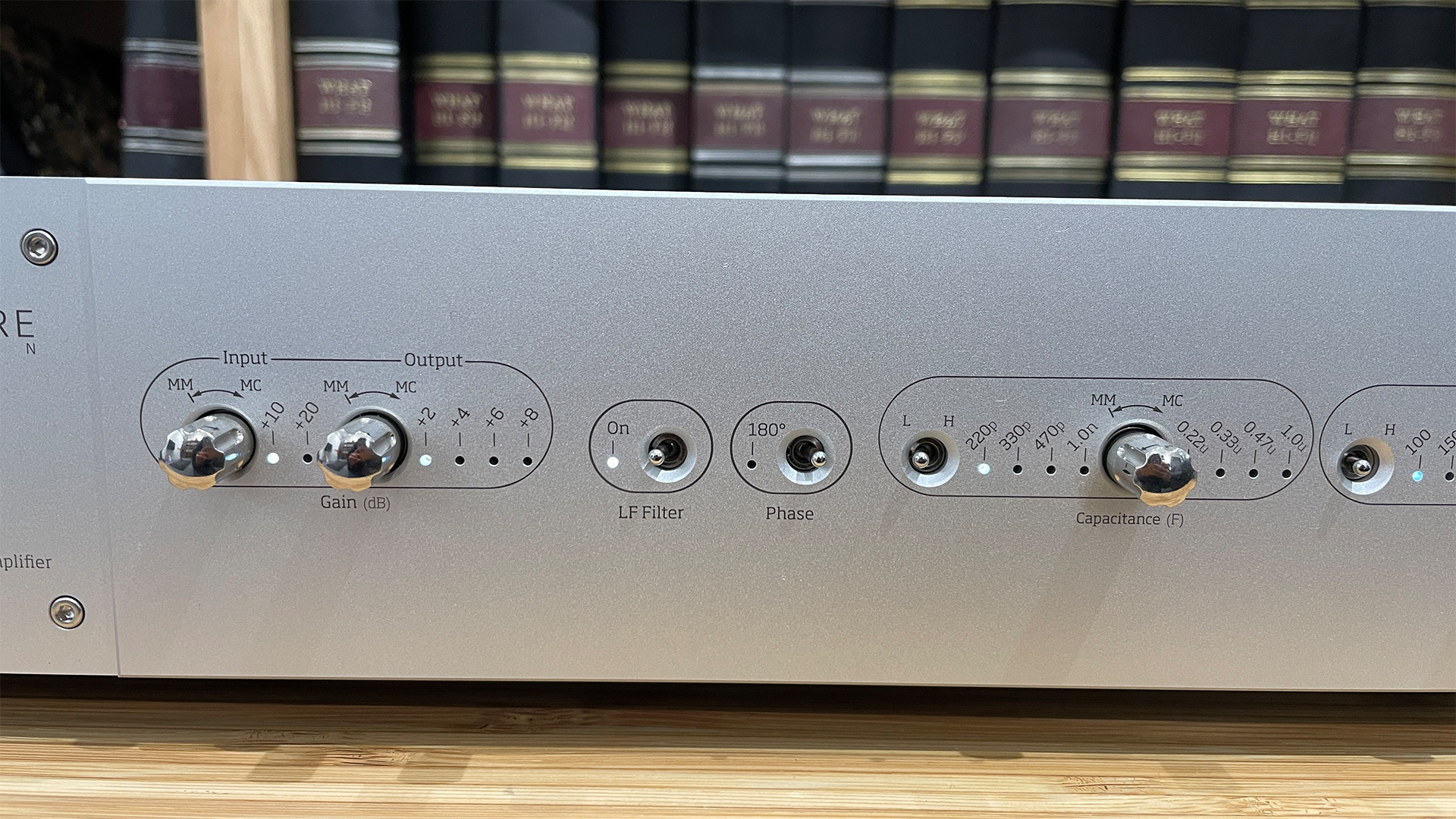
Some people will never be able to look past the Vertere Calon’s huge price tag, and we can understand that. But given a suitably talented system, with a capable record player worthy of such a phono stage, it is very hard to argue against its exceptional performance.
Putting the specifics to one side, the important thing is that listening to music through this phono stage brings an enormous amount of enjoyment. In the end, surely that’s the thing that matters the most.
First reviewed: April 2025
SCORES
- Sound 5
- Build 5
- Features 4
MORE:
Read our review of the Burmester 100
Also consider the Aesthetix Io Eclipse
Read our Luxman EQ-500 review
Best phono preamps: budget to high-end, tried and tested

Ketan Bharadia is the Technical Editor of What Hi-Fi? He has been reviewing hi-fi, TV and home cinema equipment for almost three decades and has covered thousands of products over that time. Ketan works across the What Hi-Fi? brand including the website and magazine. His background is based in electronic and mechanical engineering.
- Kashfia KabirHi-Fi and Audio Editor
You must confirm your public display name before commenting
Please logout and then login again, you will then be prompted to enter your display name.
